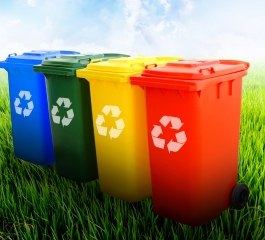Furthermore, the process in question cannot be done anywhere. When done, incorrect disposal is responsible for causing a number of environmental risks and problems and more.
Want to know more? Keep reading this article as it is full of important information regarding lamp disposal. Check it out!
How important is the correct disposal of light bulbs?
Light bulbs, especially older ones such as incandescents and fluorescents, in addition to glass, are made up of a variety of heavy metals, including mercury.
These substances have the potential to contaminate rivers, springs and affect marine and terrestrial life.
In addition, humans are at risk of health problems such as kidney, lung and neurological diseases when consuming contaminated fish.
In summary, disposing of light bulbs correctly is critical to protecting the environment, promoting public health, encouraging material recycling, and complying with legislation.
By adopting responsible disposal practices, we are contributing to a more sustainable future and preserving natural resources for future generations.
How to dispose of light bulbs correctly?
Now that you understand the importance of disposing of them correctly, check out the main types available in the markets and how to dispose of each one.
1.Incandescent lamp:
Due to the materials used, such as tungsten and argon, the sale of this lamp model has been prohibited in Brazil since 2016, due to the high risk of contamination in case of incorrect disposal.
If you have this type of product, the best way to dispose of it is to wrap it in a cardboard box and then deliver it to collection points.
If possible, we recommend placing a label on the bag to clearly identify that it is an incandescent lamp, in order to avoid damage to health.
2.Fluorescent lamp:
The correct way to dispose of fluorescent lamps is to wrap them in a box or a very resistant bag in order to isolate the waste as much as possible.
Once this is done, just take it to an authorized location, which collects this material.
By taking the material to the mentioned location, the lamps will be sent to the recycling process.
The main objective of this process is to take advantage of part of the raw material, in addition to properly disposing of unused waste.
3.LED lamps:
Contrary to what many think, we should consider LED lamps as the least harmful model for the environment. However, it is equally important to properly dispose of these lamps.
That’s because the glass residue found in them can cause several accidents. Therefore, it is essential to look for an appropriate place to dispose of LED lamps.
Where to discard?
Due to the serious contamination risks for water and soil, it is essential to avoid disposing of lamps in landfills, especially those containing materials such as mercury, sodium vapor and mixed light.
Fortunately, nowadays, there is a reverse logistics service that complements Law nº 12.305/10, stipulating the responsibility of lamp manufacturers in the collection of these products after the end of their useful life.
Based on this, it is possible to properly dispose of fluorescent lamps at the delivery points provided by the companies that manufacture this type of lamp.
You can usually find the address of these locations on the product packaging.
In addition, the disposal of light bulbs can be carried out in ecopoints or ecocenters, which consist of specific places designated for the proper disposal of various types of waste.
However, it’s worth remembering the importance of checking venue guidelines.
Therefore, by choosing this approach, we contribute to the preservation of the environment and avoid contamination by harmful substances present in the lamps.
Final considerations
In conclusion, it is of paramount importance to properly dispose of light bulbs to protect water quality and preserve the health of the environment.
[articles-photos]
Lamps contain materials and substances that pose risks of contamination, making it necessary to know the correct method of disposal for each type.
There are options available, such as delivery points provided by manufacturing companies and specific ecopoints/centres.
By disposing of light bulbs correctly, we actively contribute to environmental preservation and the promotion of public health.
It is essential to be aware of local guidelines to ensure a responsible and sustainable disposal approach.


